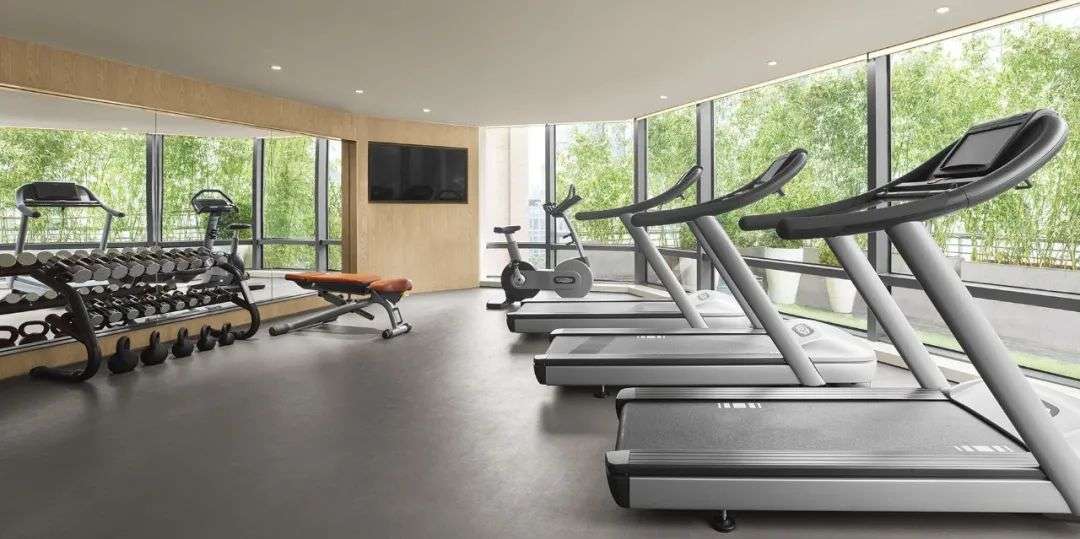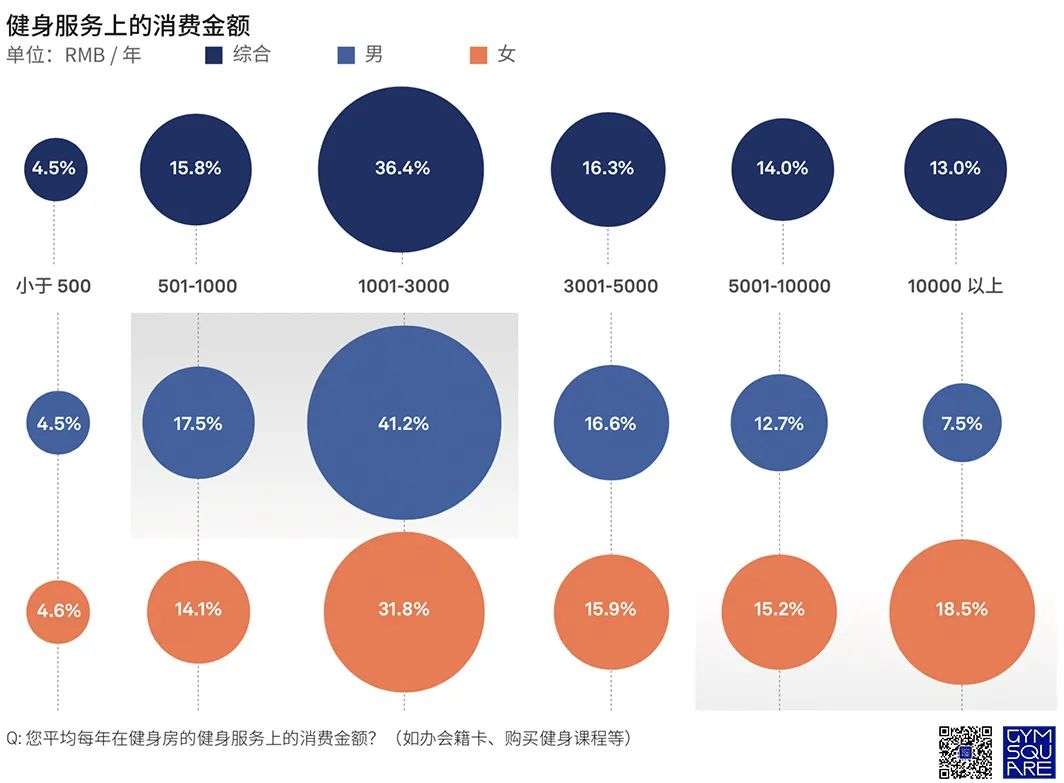As the target of Welsh in the United States, the luxury gym Equinox has a total of 92 clubs and 350,000 members in the United States as of August 2020. Members spend an average of US$3,500 each year in the club.
Members joining the Equinox Club for the first time need to pay an initial fee of US$200-500, and monthly memberships range from US$185-500. Calculated in this way, from the basic annual membership cost of a single store of US$2,700 to the annual cost of US$5220 in the premium membership of Transprincipal, the membership income accounts for most of the club’s income.
The difference is that the main source of profit for most Chinese gyms is not membership fees, but personal training fees.
According to the “2020 China Fitness Industry Report” released by GymSquare, 47% of comprehensive gyms account for 83% of the national gyms in terms of revenue. Among them, the revenue from personal training accounts for 43.3%, which is more than Membership income.
This huge difference in revenue level also makes Chinese gyms and foreign gyms completely different in their operating models.
In Chinese gyms, the number of membership consultants exceeds the total number of front desk and logistic personnel. From the initial consumption of joining the club, to the later renewal and card upgrades, the membership consultant completes.
■ SaaS system Mindbody
In the United States, whether it is a luxury club Equinox, a cheap gym Planet Fitness, or a boutique studio Barry’s Bootcamp, the SaaS system is used for everything from site selection and pre-sale to post-opening.
The SaaS system looks expensive, but because the membership income is relatively stable, it can reduce the investment in membership consultants, reduce the risk of frequent turnover of sales staff, and the transparency of prices can also increase consumer trust.
Chinese gyms that have tasted the fitness consumption bonus are still fastDuring the rapid expansion stage, without the support of strong capital, prepayment has become the only way to quickly consolidate investment. The demand for cash flow has also become a reason why monthly payments are difficult to implement.
The monthly paid fitness habit needs the penetration rate of the fitness population to support
Although the overall market size of China’s fitness industry is in a period of steady growth, the fitness penetration rate is still at a low level of 2%.
From the “2020 China Fitness Industry Report”, the four super first-tier cities in Beijing, Shanghai, Guangzhou and Shenzhen account for one third of the entire Chinese fitness market, with a fitness population penetration rate of nearly 10%; 15 cities including Chengdu, Chongqing and Hangzhou Major cities also occupy one-third of the market, with penetration rates between 1-3%; the remaining more relatively sinking cities constitute one-third of China’s scattered fitness market.
From the perspective of consumer behavior, Chinese fitness consumers are still at an early stage. This is the key to restricting the formation of monthly payment fitness habits.
■ Refining GymSquare “2020 China Fitness Industry Report”
Even for consumers who want to exercise, their ignorance of fitness equipment and movements is a “blocker” that prevents them from sticking to it.
“I don’t know how to use those equipment. Going to a traditional gym is worse than going to a group class studio to have a group class.” said a fitness enthusiast who loves group exercises.
As the main force in creating profits, traditional fitness coaches are under heavy performance pressure. Guiding members on the use of fitness equipment is usually for the purpose of promoting personal training courses. There seem to be only two ways for fitness beginners: buying expensive personal training courses, or using limited equipment for limited fitness activities.
■ Group class fitness
For this part of the new user groups whose fitness frequency is low and their health awareness needs to be cultivated, they do not need the fitness coach’s criticism of their body or movements, and the psychological level of accumulation.



